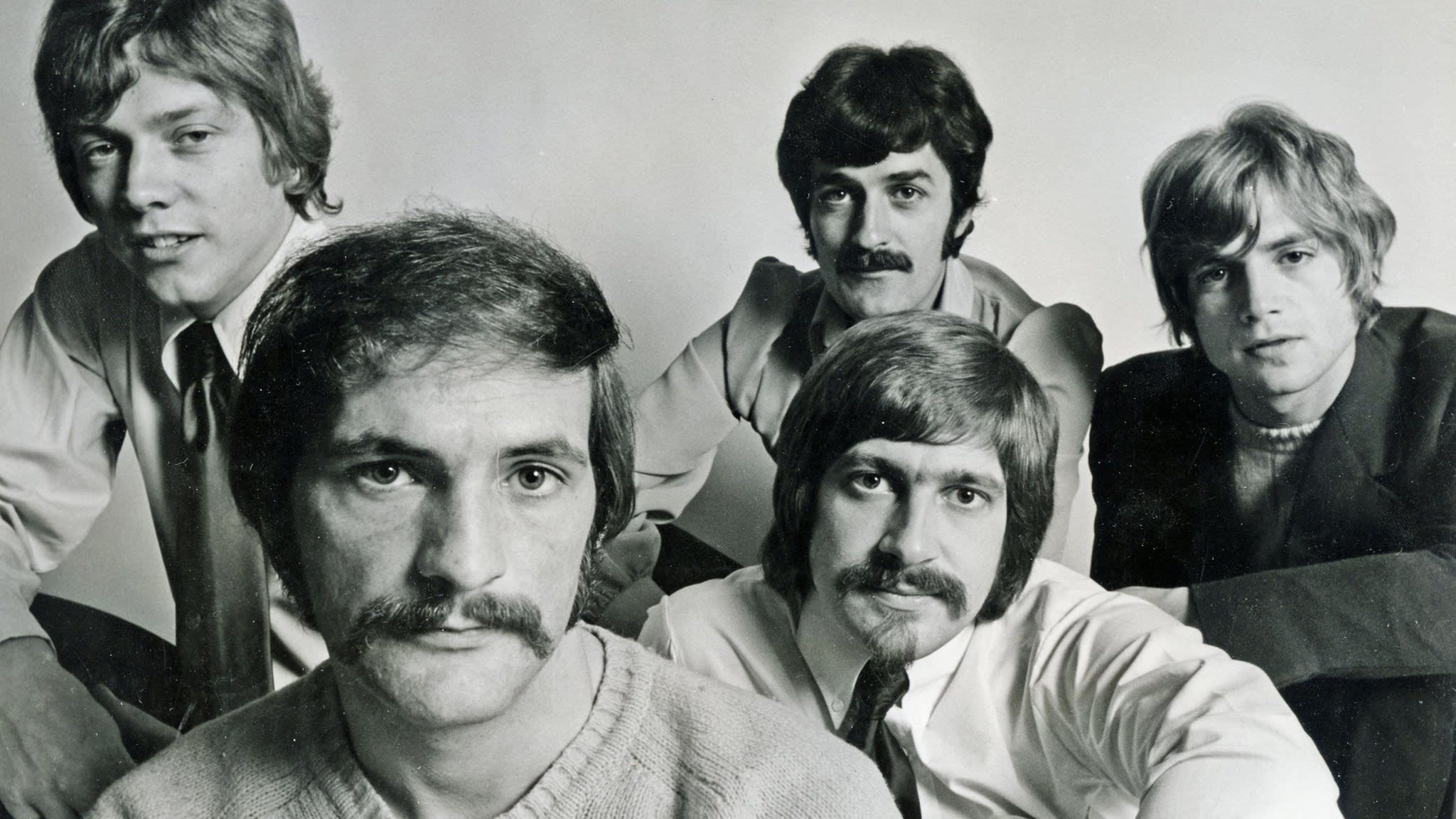Sometimes, having a huge hit can be both a marvel and a chore. Although Justin Hayward is grateful for everything “Nights in White Satin”has brought him, he also suspects it’s at least part of the reason why the Moody Blues have long been surrounded by the faint whiff of naffness. “Most of the covers of ‘Nights’ have been Bert Cringe Plays Romantic Favourites With Strings in the Night,” he says. But every time he plays it live, he sees something remarkable happen. “You can do it in a soundcheck and technically it’s nice, but you play it in front of an audience and they bring a sort of magic to it: people get closer to each other, they hold hands and touch each other. It’s great. It’s something I would never want to give up.”
“Nights in White Satin” is one of the few songs of the rock era that became a standard, covered not just by other rock bands, but by singers of all genres. It is, almost certainly, the only song to have been recorded as, variously, a Eurodisco banger (Giorgio Moroder), a punk single (The Dickies), a deep soul lament (Bettye LaVette, Eric Burdon), as well as in the many and varied Bert Cringe Plays Romantic Favourites With Strings in the Night versions (James Last, Richard Clayderman, Nana Mouskouri).
Though the song has become a staple of the kind of radio stations that minicab drivers tune in to in the early hours of the morning, that wasn’t its original purpose. The Moody Blues were a failing R&B band when Hayward joined in 1966. Hayward, who by his own admission was pretty rubbish at R&B, saw the group as the vehicle for his own songs, which embraced the new psychedelic mood swirling around London. The acid-tinged “Fly Me High”, in 1967, was the first fruit of this. “Nights in White Satin” would be the second single he wrote for the group, aged just 19.
The white satin was a set of sheets bought for Hayward by a girlfriend, from whom he had since parted — the subject of the “letters I’ve written, never meaning to send”. He wrote the music on a 12-string guitar in a shared flat in Bayswater, in London (his bandmate Ray Thomas later claimed Hayward had the idea sitting with his guitar on the loo). It’s a very simple song — E minor to D for the first and third lines of each verse, then Hayward’s voice reaching up as the chords descend to C, G, F and back to E minor for the second and fourth lines. And then, on the chorus — “Cos I love you, yes I love you, oh how I love you” — a dramatic ascent from A to C that somehow brings those quotidian words to life. What adds to the drama is the combination of the band’s harmonies and the £300 Mellotron Mike Pinder had bought, and which became the centrepiece of the Moodies’ lush new sound. The new sound gave the group a career that lasts to this day, and which sees them inducted into the Rock and Roll Hall of Fame on April 14.
“Nights in White Satin” wasn’t an immediate smash — number 19 in the UK in 1967; number 103 in the US the following year. But it refused to die. The cover versions began almost immediately — often by non-Anglophone artists (Franck Pourcel, I Nomadi, Dalida, Tommy Körberg). Eric Burdon’s 1970 renditionwith War — on the atrociously titled The Black Man’s Burdon album — was the first transformative version, though Burdon’s odd phrasing somehow strips the lyrics of meaning. Giorgio Moroder, as was his wont, managed to stretch the song out to nearly 15 minutes in 1976 by putting five minutes of his own music in the middle. The Dickies, the novelty punk group, made it yet another of their unlikely and unamusing cover versions, and reached the top 40, in 1979.
For Hayward, though, the best version is one of the most recent, recorded by someone a long way from the kid he was when he wrote it — Bettye LaVette’s2010 recording, which he says made him cry when he first heard it. “It’s curious to write a song at 19 or 20, and then to hear it at 65. Every word of it was exactly the same as mine, but she put it together and made the sentences work and be relevant in a different way. I heard it for the first time in a way, all those years later.”
We are keen to hear from our readers. Whose version of “Nights in White Satin” is best? Do you have particular memories of the song? Let us know in the comments below.
‘The Life of a Song: The fascinating stories behind 50 of the world’s best-loved songs’, edited by David Cheal and Jan Dalley, is published by Brewer’s.
Music credits: UMC (Universal Music Catalogue), Repertoire Records, UMC (Universal Music Catalogue), Anti/Epitaph, Far Out Productions, UMC (Universal Music Catalogue), USM Digital, Universal Music Group International, UMC (Universal Music Catalogue), Far Out Productions,
Picture credit: Tony Gale
